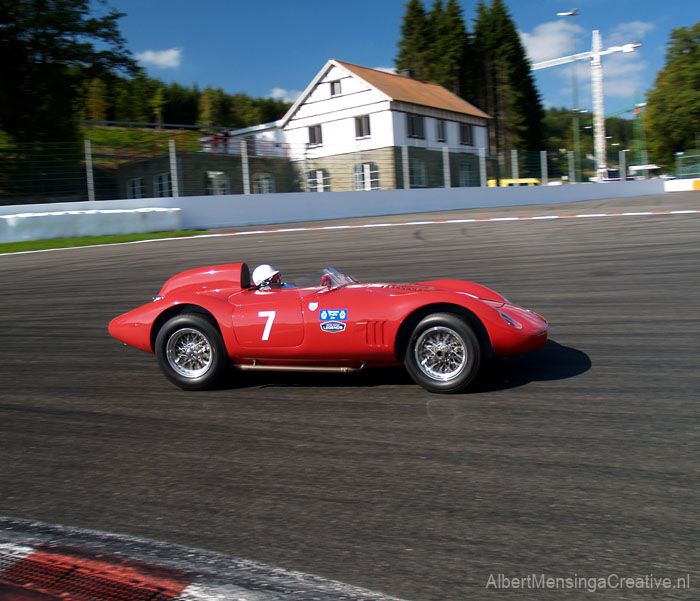Showpiece of the Week: OSCA 1600 GTS Zagato
This pretty, lightweight Italian racer competed at Le Mans and helped inspire the original MX-5

The Maserati brand we know today is synonymous with luxurious grand tourers (and SUVs), but once upon a time it was only concerned with motorsport. Its original founders, a trio of Maserati brothers, Ernesto, Ettore and Bindo, were supremely talented designers and engineers, but their skills on the drawing board sadly weren’t enough to secure the profitable survival of the Italian marque. It was subsequently sold in 1937 to Adolfo Orsi, with whom the Maserati brothers would soon become dissatisfied. A decade later and 21 years after founding the firm, after growing frustrated with an Orsi-encouraged shift in focus to more profitable GT road cars, the Maserati trio departed the company that bore their family name.
They returned to their first location in Bologna and established Officine Specializzate Costruzioni Automobili, quickly returning to their passion: motor racing. Developing an open-top racing car powered by a four-cylinder engine called the Tipo 4, which wore the OSCA badge with the words Fratelli Maserati Bologna (for Maserati brothers of Bologna) on its nose, the brothers soon recaptured the attention of the industry. The Tipo 4 went on to win the 1954 12 Hours of Sebring with a certain Stirling Moss behind the wheel for the American Briggs Cunningham team.

It was off the back of this form that the Maseratis developed a 1,568cc twin-cam motor that would power through a four-speed gearbox in a competition model called the 1600 GT from 1960. The new two-door was available in several bodies, but the curvaceous shells carved by the designers at Zagato were by far the most appreciated. A double-bubble body created arguably the most recognisable Zagato form, but a more discreet flat roof alternative was also produced for better aerodynamics. Inside, the race-focus was clear, with the car featuring a pair of simple, deeply-bolstered seats, a varnished wood-rimmed steering wheel and plain dash with only essential switches and gauges.
105hp and 98lb ft of torque was provided by the high-revving four-cylinder, with the 862kg 1600 GT sprinting from zero to 62mph in 9.8 seconds and onto a top speed of around 120mph. To offer its best, the rear-driven racer needed to be hustled in a manner similar to Mini Cooper Ss, where maintaining momentum and maximising corner apex speed was of top priority. This was a vastly different technique to the point-and-squirt one employed by drivers of far larger rivals, including comparably enormous American machines, so it ensured the OSCA model would become famous for David and Goliath-esque on track battles.

As the 1600 GT took to the global racing stage, the OSCA company continued to produce cars and engines that competed in other formulae, including the very pinnacle, F1, but the 1600 GT is to some the most memorable car to have come from of the Bologna brothers’ firm. In fact, its influence on the automotive industry was far larger than many might expect, with one particular example – the one that’s conveniently on sale here - having been purchased by Mazda for use in research alongside Colin Chapman’s Lotus Elan during development of the first Mazda MX-5.
Today’s Showpiece is one of just four OSCAs currently advertised on PH, and one of only two 1600 GTs to be listed. That’s not surprising because only 128 were produced during its four-year production run, with just 98 wearing Zagato bodies. Our car stands out because it is an even more focussed GTS and comes with period endurance race-specification enhancements, including those more aerodynamic headlights and a massive 80-litre fuel tank, which can be seen poking out from underneath at the back.

These improvements were added because chassis 0036 was produced as an experimental prototype for Le Mans. As such, it features a unique flat-topped roof by Zagato (instead of the usual double-bubble) and a live rear axle. It also used a higher specification twin plug (per cylinder) head and bigger 45 DCO Weber carburettors, while the front grille was modified to reduce the frontal lift experienced at high speed on the Mulsanne Straight. Talk about pedigree. And the best bit? The seller says “it is on the button and ready to be enjoyed”, meaning you could hand your cash over and drive this stunning little Italian racer straight out of the showroom and use it at Goodwood and other good historic motorsport events.
We hope that the buyer, someone has £600k to spare, will ensure this fantastic example of motorsport history returns to the public spotlight for many to see and appreciate. It would be such a shame if that gorgeous form and all of the pedigree held within it were locked away in a private collection again. Come on PHers, who'll contribute to the whip-round?
Click here to see the original advert.

Either way, it's a lovely car, reminds me a bit of the gorgeous Abarth Simcas that came along a bit later.
Many thanks
Many thanks
Gassing Station | General Gassing | Top of Page | What's New | My Stuff







